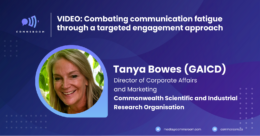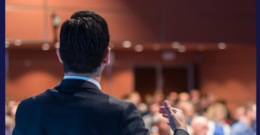From a comms perspective, it’s becoming more and more important to show how you can add to the commercial outcomes of the organisation.
The importance of good data in communication campaigns cannot be overstated. Good data coupled with sound analysis allows communication teams to make educated guesses on the best way to attack a problem. It also allows them to set realistic goals.
After the campaign ends, the ability to collect, measure, and analyse real-world data allows teams to determine which strategies are working, and which ones need tweaking.
In this video, Telstra’s Head of Communications Nicole McKechnie presents first-hand accounts of running communication campaigns in Telstra, where she has been working for more than a decade.
Among the case studies that she presents is the campaign they ran at the height of the COVID-19 pandemic, when conspiracy theorists claimed 5G equipment helped spread the virus and was making more people sick.
The result was a series of videos using satirical comedy with Mark Humphries, which garnered positive reaction on both social and mainstream media.
McKechnie also gives a preview on how her team tracks elusive metrics such as reputation, from the tools they use to the and the strategies that inform their work.
Perhaps most importantly, McKechnie also talks about the importance of finding a direct correlation between the successes of your communication campaigns and the commercial interests of your organisation.
“We create a lot of our work as a result of the data that we’re seeing, and it also helps shape where we’re heading, but it also allows us to see whether we’ve been successful,” McKechnie said.
Get full access to Nicole McKechnie’s session recorded during the 6th Corporate Comms Leader Summit by filling out the form below.




























